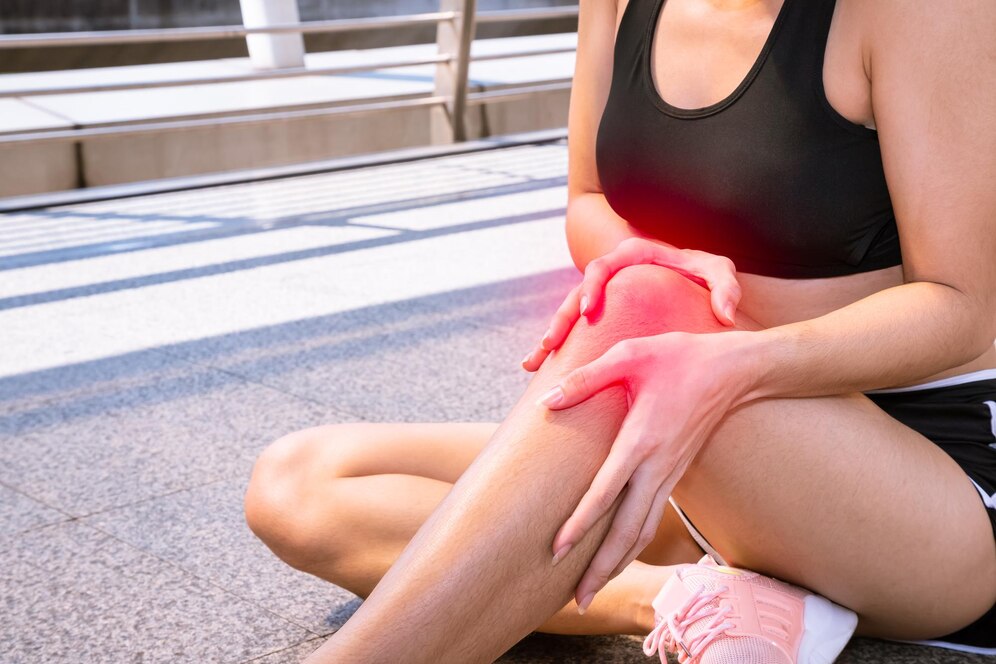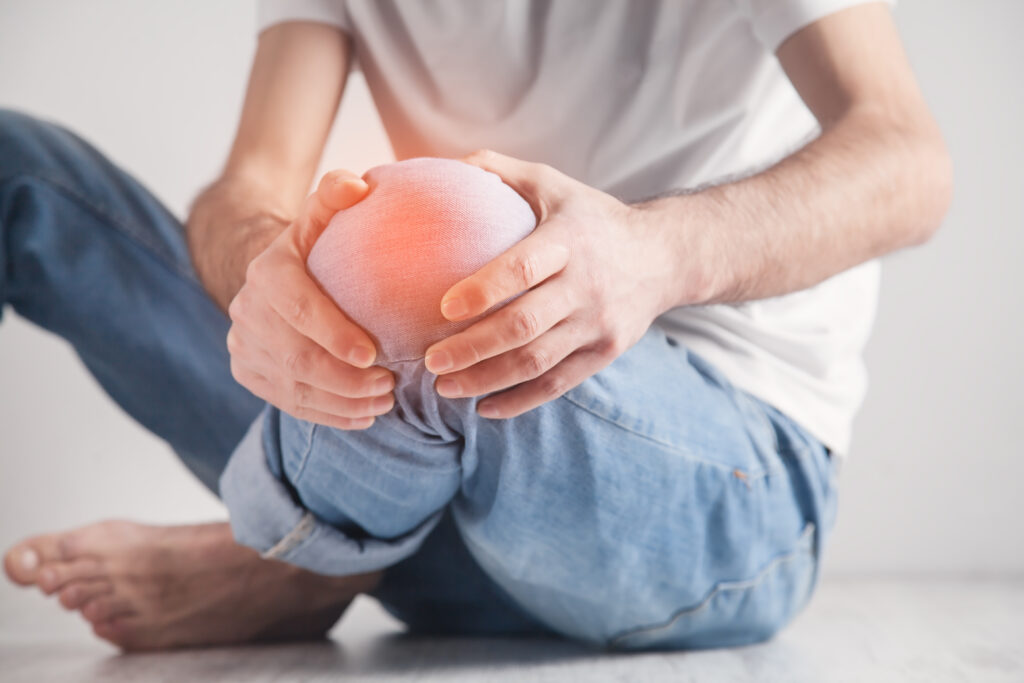When you face a sports injury in Calhoun, knowing how to respond can make all the difference in your recovery. It's vital to implement the R.I.C.E. method right away, but that's just the beginning. Local clinics offer tailored solutions, and understanding your options for rehabilitation can greatly impact your healing process. You might also find that prevention plays a key role in keeping you on the field. Want to explore the best strategies to guarantee you're back in the game safely and effectively?
Understanding Common Sports Injuries
When you step onto the field or court, it's essential to be aware of the common sports injuries that can sideline you. Understanding these injuries can help you take preventive measures and recognize symptoms early.
Sprains and strains are among the most frequent injuries. A sprain occurs when ligaments—the bands of tissue connecting bones at a joint—are stretched or torn, often affecting the ankle or knee. Strains, on the other hand, involve muscles or tendons and usually happen in the hamstrings or quadriceps.
Another common injury is tendonitis, which results from overuse, leading to inflammation of the tendons. This is often seen in sports that require repetitive motions, like tennis or running. If you feel persistent pain in a joint or muscle, it might be tendonitis.
Fractures are also a concern, especially in contact sports. These breaks can range from hairline fractures to complete breaks, often requiring medical attention. You should also keep an eye out for dislocations, where a bone slips out of its joint, typically happening in the shoulder or fingers.
Lastly, concussions are serious injuries that can affect your brain function. If you experience headaches, confusion, or dizziness after a hit, it's important to seek medical help immediately.
Immediate First Aid Steps
In the heat of the moment, knowing how to respond to a sports injury can make all the difference. Whether it's a sprain, strain, or something more serious, quick action is essential. Here are four immediate first aid steps you should follow:
- Assess the Situation: Quickly determine the severity of the injury. Check if the athlete can move the affected area or if there's considerable pain. If the injury appears severe, seek professional help right away.
- Stay Calm: Your composure can help reassure the injured person. Speak in a calm tone and encourage them to relax. Panicking won't help anyone and can exacerbate the situation.
- Control Bleeding: If there's bleeding, apply gentle pressure with a clean cloth or bandage. Elevate the injured area if possible, and encourage the victim to remain still to minimize further injury.
- Immobilize the Injury: For sprains or fractures, keep the injured area as still as possible. Use splints or any available materials to stabilize it until medical help arrives. Avoid moving the person unless absolutely necessary.
These immediate actions not only help minimize further damage but also provide comfort to the injured.
R.I.C.E. Method Explained
After addressing immediate first aid steps, it's important to know how to manage a sports injury in the following hours and days. The R.I.C.E. method is a widely recommended approach for treating sprains, strains, and other soft tissue injuries. R.I.C.E. stands for Rest, Ice, Compression, and Elevation.
First, you'll want to rest the injured area. This means avoiding activities that could worsen the injury. Give yourself time to heal—don't rush back into action too soon.
Next, apply ice to the injured area. Ice helps reduce swelling and numbs the pain. Wrap some ice in a cloth or use a cold pack, and apply it for about 15-20 minutes every hour as needed. Just remember not to apply ice directly to your skin to prevent frostbite.
Compression is the third step. Use an elastic bandage or a compression wrap to help minimize swelling. Make sure it's snug but not too tight; you should still be able to move your fingers or toes comfortably.
Lastly, elevate the injured area. Keep it raised above the level of your heart as much as possible. This helps reduce swelling by allowing fluids to drain away from the injury site.
Over-the-Counter Pain Relief
When managing sports injuries, over-the-counter pain relievers can be a quick and effective solution.
It's important to know the common options available, as well as the proper dosages and safety tips to avoid any complications.
Let's explore how these medications can help you get back on your feet safely.
Common Pain Relievers
Relief from pain is a vital aspect of recovering from sports injuries, and over-the-counter (OTC) pain relievers can be an effective solution. These medications help manage discomfort, allowing you to focus on your recovery without the distraction of pain.
Here are some common OTC pain relievers you might consider:
- Ibuprofen: This nonsteroidal anti-inflammatory drug (NSAID) reduces inflammation and alleviates pain. It's great for muscle strains and sprains.
- Acetaminophen: While it doesn't reduce inflammation, acetaminophen is effective for general pain relief. It's a good option for those who may have stomach issues with NSAIDs.
- Naproxen: Another NSAID, naproxen provides longer-lasting relief than ibuprofen. It's beneficial for managing pain from injuries over an extended period.
- Aspirin: Often used for mild to moderate pain, aspirin also has anti-inflammatory properties. However, it's important to be cautious if you have certain medical conditions.
Always remember to follow the instructions on the packaging and consult with a healthcare professional if needed.
Using these OTC options can help you manage pain effectively as you work towards recovery.
Dosage and Safety Tips
Using over-the-counter pain relievers can substantially aid your recovery from sports injuries, but it's important to understand the proper dosage and safety precautions. Always read the label before taking any medication.
For common options like ibuprofen or acetaminophen, follow the recommended doses based on your age and weight. Generally, adults can take ibuprofen every six to eight hours, but don't exceed 1,200 mg in a day unless advised by a doctor.
Be cautious about mixing medications. For instance, using ibuprofen and acetaminophen together can be safe if you stagger the doses, but check with a healthcare provider first. If you have any existing health conditions or take other medications, consult your doctor to avoid adverse interactions.
Keep an eye out for side effects like stomach pain, dizziness, or allergic reactions. If you experience any severe symptoms, seek medical attention immediately.
Finally, stay hydrated and maintain a balanced diet to support your healing process. Remember, while over-the-counter pain relievers can help, they're just one part of your recovery plan. Always listen to your body and adjust your activity levels accordingly.
When to Seek Medical Attention
If you're experiencing persistent pain that doesn't improve with rest or over-the-counter medication, it's time to get help.
Swelling and bruising that worsen or don't subside after a few days can also signal a more serious issue.
Don't ignore these signs; seeking medical attention could prevent further injury.
Persistent Pain Symptoms
After experiencing a sports injury, it's important to pay close attention to persistent pain symptoms, as they can be indicators of more serious underlying issues.
If you find yourself dealing with ongoing pain, it might be time to seek medical attention. Here are four signs to watch for:
- Pain that Worsens: If your pain intensifies over time or doesn't improve with rest, it could signal a more significant problem.
- Limited Range of Motion: When you can't move the injured area as you normally would, that's a red flag you shouldn't ignore.
- Pain During Normal Activities: If you feel pain even while doing everyday tasks, it's a sign that something isn't right.
- Pain that Persists Beyond a Few Days: If your pain lasts longer than a few days without improvement, it's essential to consult a healthcare professional.
Don't underestimate persistent pain.
Listening to your body is imperative, and addressing these symptoms early can prevent further damage and lead to a more effective recovery.
Swelling and Bruising
Swelling and bruising are common responses to sports injuries, but they can also signal the need for medical attention. If you notice excessive swelling that doesn't improve with rest, ice, compression, or elevation, it's important to consult a healthcare professional. This might indicate a more serious underlying issue, such as a fracture or significant soft tissue damage.
You should also be concerned if the bruising spreads rapidly or appears without a clear cause. This could suggest internal bleeding or other complications. Additionally, if you experience severe pain that doesn't subside, you shouldn't hesitate to seek medical help.
Another red flag is if you notice restricted mobility in the affected area. If you can't move the joint or limb as usual, it's crucial to get checked out.
Finally, if the swelling or bruising is accompanied by fever, chills, or a feeling of warmth, you may have an infection, which requires immediate attention.
Always err on the side of caution—when in doubt, it's best to reach out to a medical professional for advice and potential treatment. Your health should always come first.
Physical Therapy Options
When dealing with sports injuries, examining physical therapy options can be a game-changer in your recovery process. Physical therapy not only helps reduce pain and swelling but also restores mobility and strength.
Here are some effective options you might consider:
- Manual Therapy: This hands-on technique involves the therapist using their hands to manipulate your muscles and joints. It can help improve circulation and reduce stiffness.
- Modalities: Various modalities such as ultrasound, electrical stimulation, or heat/cold therapy can relieve pain and promote tissue healing. These techniques are often tailored to your specific injury.
- Therapeutic Exercises: While we won't investigate rehabilitation exercises just yet, your therapist will likely incorporate strength and flexibility exercises tailored to your injury. These exercises play a vital role in preparing you for a return to sports.
- Education and Training: An important part of physical therapy involves educating you about your injury and teaching proper techniques to avoid future injuries. You'll learn about body mechanics and how to modify your activities for a safer return to your sport.
Physical therapy can greatly impact your recovery journey.
It's important to consult with a qualified therapist who can develop a personalized plan for you. By taking advantage of available physical therapy options, you'll be on the path to healing and getting back in the game sooner.
Rehabilitation Exercises
Rehabilitation exercises are essential for your recovery after a sports injury, helping restore strength and mobility.
You'll often use common techniques like stretching, strengthening, and balance exercises to aid your healing process.
Importance of Rehabilitation Exercises
Rehabilitation exercises play an essential role in your recovery from sports injuries.
These exercises not only aid in healing but also help you regain strength, flexibility, and confidence. By incorporating rehabilitation exercises into your routine, you can guarantee a smoother and more effective recovery process.
Here are four key benefits:
- Improved Strength: Targeted exercises help rebuild the muscles surrounding the injured area, enhancing overall strength and stability.
- Increased Flexibility: Stretching and mobility exercises promote flexibility, which can prevent future injuries and improve your performance.
- Pain Management: Engaging in rehabilitation can help reduce pain and discomfort associated with your injury, making daily activities more manageable.
- Faster Recovery: Consistent rehabilitation exercises can speed up the healing process, allowing you to return to your favorite sports sooner.
Incorporating these exercises into your recovery plan is vital.
Remember, working with a qualified physical therapist can guide you in choosing the right exercises tailored to your specific needs.
Prioritize your rehabilitation, and you'll be back in action before you know it!
Common Rehabilitation Techniques
After understanding the significance of rehabilitation exercises, it's time to explore some common techniques that can help you effectively recover from sports injuries.
One popular method is strength training, which helps rebuild muscle and improve stability around the injured area. Focus on low-resistance exercises initially, gradually increasing as you gain strength.
Another technique is flexibility training. Stretching exercises can enhance your range of motion and reduce stiffness. Incorporate dynamic stretches before activities and static stretches afterward to maintain flexibility.
Balance training is also essential. Exercises like single-leg stands can enhance proprioception, helping you regain stability post-injury.
Additionally, consider aerobic conditioning. Activities like swimming or cycling can maintain cardiovascular fitness while minimizing stress on the injured area.
Lastly, don't overlook the significance of ice and heat therapy. Ice can reduce inflammation, while heat promotes blood flow during recovery.
Each technique plays an important role in your rehabilitation process.
Always consult with a healthcare professional before starting any new exercise regimen, ensuring it aligns with your specific injury and recovery goals.
Importance of Rest and Recovery
Rest and recovery are essential components of treating sports injuries effectively. When you experience an injury, your body needs time to heal. Ignoring this need can prolong your recovery and set you back even further.
Here are four key reasons why rest and recovery matter:
- Reduces Inflammation: Giving your body a break helps minimize inflammation, allowing tissues to repair themselves more efficiently.
- Restores Energy: Your muscles and joints require energy to heal. Resting allows your energy levels to replenish, which is vital for the recovery process.
- Prevents Further Injury: By pushing through pain and not allowing adequate recovery time, you risk exacerbating your injury or causing new ones. Listen to your body; it knows what it needs.
- Enhances Performance: Adequate recovery can improve your performance once you're back in action. When you rest, you're not just healing; you're also building strength and flexibility that can enhance your athletic abilities.
Incorporating rest into your recovery plan doesn't mean you have to become inactive. Engage in gentle activities like stretching or low-impact exercises to maintain mobility while allowing your injury to heal.
Remember, the goal is to come back stronger than before. Prioritizing rest and recovery isn't just about healing; it's about setting yourself up for long-term success in your sports journey.
Don't underestimate the power of a good recovery plan!
Preventative Measures for Athletes
To prevent sports injuries, it's crucial to adopt proactive measures that keep your body in peak condition. Start by incorporating a proper warm-up routine before every practice or game. Spend at least 10-15 minutes stretching and performing dynamic exercises to increase blood flow and flexibility. This will prepare your muscles and joints for the physical demands ahead.
Next, focus on strength training. Building muscle strength not only enhances your performance but also supports your joints and reduces the risk of injury. Incorporate exercises targeting key muscle groups relevant to your sport, and don't forget to balance your workouts by training opposing muscle groups as well.
Hydration is another critical factor. Dehydration can lead to muscle cramps and fatigue, increasing your susceptibility to injuries. Make sure you're drinking enough water before, during, and after your activities. Pay attention to your body; if you feel thirsty, it's a sign you need to hydrate.
Also, invest in the right gear. Wearing appropriate footwear and protective equipment tailored to your sport can greatly reduce your risk of injury. Confirm your gear fits well and is in good condition.
Lastly, listen to your body. If you feel pain or discomfort, don't push through it. Rest and seek help if necessary.
Local Resources in Calhoun
Calhoun offers a variety of local resources that can help athletes recover from sports injuries effectively. Whether you're dealing with a sprain, strain, or any other sports-related issue, these resources can provide the support you need for a swift and safe return to your game.
Here are four key resources you should check out:
- Calhoun Sports Medicine Clinic: This clinic specializes in diagnosing and treating sports injuries. Their team of professionals includes physical therapists and orthopedic specialists who can create a tailored recovery plan for you.
- Local Gyms and Fitness Centers: Many gyms offer rehabilitation programs designed specifically for athletes. They often provide access to trainers who can help you strengthen the affected area and prevent future injuries.
- Community Health Programs: Keep an eye out for local health initiatives that focus on sports safety and injury prevention. These programs often host workshops or free screenings to help you assess your condition and learn about proper recovery techniques.
- Support Groups and Forums: Connecting with fellow athletes can be incredibly helpful. Look for local support groups or online forums where you can share experiences and tips on injury recovery.
Using these resources can empower you to take charge of your recovery journey.
Don't hesitate to reach out and utilize the tools available in Calhoun to guarantee you bounce back stronger than ever!
Conclusion
Injuries can be frustrating, but with the right approach, you can bounce back quickly. Remember to follow the R.I.C.E. method right after an injury and consider local resources in Calhoun for specialized care and rehabilitation. Don't underestimate the importance of rest and recovery, and always be proactive about preventing future injuries. By staying informed and engaged, you'll not only recover faster but also enhance your overall performance in your chosen sport. Stay safe and keep moving!



